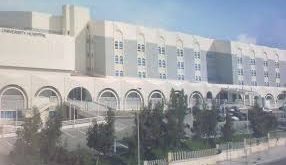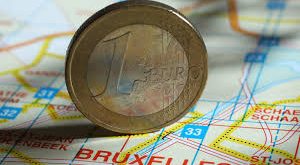Proposals to expand the Rafik Hariri International Airport in Beirut will cost at least $200 million, representatives of Middle East Airlines and an Arab contractor and consulting firm told the prime minister Tuesday.
During the meeting with Prime Minister Saad Hariri, Dar al-Handasah (Shair & Partners) consultancy proposed a plan of action to develop and expand the airport to accommodate 10 million passengers a year. The initial estimate places the cost of the two-phase project at around $200 million.
The first phase would entail renovating the existing airport buildings to increase capacity to around 8 million passengers annually. The second phase would see a new wing added to the airport, refurbishing the Customs building and the out-of-service cargo hanger to boost capacity to 10 million. The project would include upgrades in parallel to the expansion. The firm recommended a more efficient baggage handling system, changes and updates to security checks and adding additional areas for tax-free shops.
MEA Chair Mohamad El-Hout, who also attended the meeting, submitted the airline’s own proposal that was drawn up with the Council for Development and Reconstruction, which is estimated to cost $60 million. Although that project is focused more on security upgrades, many key points reportedly echo the proposal by Dar al-Handasah.
MEA’s plan also addresses the need to repair existing infrastructure to ensure its sustainability, including integrated backup power generators, a modern aircraft landing system, core cooling systems and the refurbishment of toilets and escalators.
It also addresses the need for major structural work on the runways, which MEA estimates will cost $28 million.
Hariri stressed that the proposals were not final. Tuesday’s meeting, similar to another one held in November 2017, aimed to contribute solutions and remove administrative problems that may impede the work. “These projects may not be available today, they are plans for future implementations,” Hariri said.
The airport was initially built to accommodate between 4 million and 5 million passengers annually and has seen a steady increase from 2012 to 2017, according to a five-year study by the Directorate-General of Civil Aviation. The study looked specifically at the period two months before the Christmas holiday until two months after New Year’s Eve and stated that within the last three years, the airport experienced an annual increase of 7-15 percent in the number of flight arrivals.
However, the increase doesn’t only apply to the holidays. Over 1 million passengers passed through the airport in August 2017. This was largely due to record number of pilgrims leaving for the hajj, which also coincided with a large number of Lebanese expatriates returning to their country of residence. The glut of passengers caused long delays, with images of the crowded departure hall going viral on social media.
The meeting, held at the Grand Serail, was also attended by Interior Minister Nouhad Machnouk, Finance Minister Ali Hasan Khalil, Transport Minister Youssef Fenianos, head of the Council for Development and Reconstruction Samir Jisr, Secretary-General of the Higher Council for Privatization Ziad Hayek and Airport Security head Brig. Gen. George Doumit.
 Lebanese Ministry of Information
Lebanese Ministry of Information



